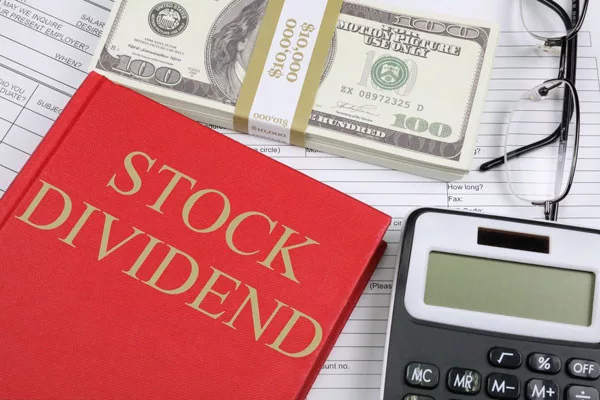The Changing World of Retirement Planning: Why Your Parents’ Strategy Won’t Work for You
Explore the changing world of retirement planning and why traditional methods may not be enough for today’s retirees.
Look, I’ll be completely honest with you — when I first started thinking about retirement in my twenties, I basically assumed I’d just copy-paste whatever my parents did. You know the drill: stick with one company for three decades, throw money at a 401(k), grab that pension, and ride off into the sunset with a gold watch and zero financial worries. Yeah… about that. Turns out that world is about as real as unicorns now, and the changing world of retirement planning has basically left most of us staring at our bank accounts wondering what the hell we’re supposed to do.
The whole retirement thing has gotten flipped on its head so dramatically that the old playbook isn’t just outdated — it’s basically useless. We’re dealing with dead pensions, people living way longer, healthcare costs that make your eyes water, and an economy that reinvents itself more often than Madonna. Planning for retirement now? It’s a completely different beast. And if you’re feeling like you’re drowning in all this? Welcome to the club. We have jackets.
Why Everything Changed (And Why It Actually Matters to You)
Okay, so let’s start with the obvious: pensions are basically extinct. Like, seriously dead. The Bureau of Labor Statistics says only about 15% of private-sector workers even have access to a pension anymore, compared to 35% back in the early ’90s. That’s insane when you think about it. My dad worked at the same manufacturing plant for 32 years and walked away with a pension that basically covered his life. When I asked my HR person about our pension plan, she looked at me like I’d just asked where we stable the company horses.
The changing world of retirement planning didn’t just happen overnight, but man, when you step back and look at it, the shift is massive. We went from a system where your employer basically took care of your retirement to one where you’re supposed to be your own financial planner, investment guru, and fortune teller all rolled into one. It’s like someone handed you airplane keys and said, “Figure it out — oh, and you’ve got 40 years to learn how to land without crashing.”
Here’s the deal: we’re living longer, working completely differently, and facing economic curveballs our parents never even imagined. Average life expectancy has jumped nearly six years since 1980, according to the World Health Organization. Which is awesome for, you know, living and stuff. But it also means your retirement money needs to stretch potentially 30+ years. My grandfather retired at 65 and lived another 12 years. If I retire at 65? I might need to fund another three decades. That’s a lot of early bird specials.
The New Retirement Reality: You Need Multiple Money Streams
So I’ve figured out that the changing world of retirement planning means thinking about money in a totally different way. The old model was beautifully simple: paycheck while working, pension and Social Security when retired. Boom, done. The new model? It’s more like financial jazz where you’re constantly improvising and hoping you don’t hit too many wrong notes.
Smart retirement planning today means building multiple income streams before you actually need them. I’m talking traditional retirement accounts, sure, but also rental properties, dividend stocks, side hustles, freelance gigs, maybe even royalties if you’re creative. I know, I know — it sounds exhausting just listing it all. But here’s the thing: diversification isn’t just some fancy investing term anymore. It’s literally survival.

The Transamerica Center for Retirement Studies found in 2023 that 54% of workers are planning to keep working in some way during retirement — part-time, consulting, whatever. And it’s not always because they’re broke (though let’s be real, sometimes it is). A lot of people are realizing that having multiple income sources gives you both financial cushion and something to actually do with your time.
I’ve been building my own side income streams, and honestly? It’s been weirdly fun. Never thought I’d be the “portfolio career” person, but the changing world of retirement planning has made this less of a trendy choice and more of a necessity. Plus, there’s something really comforting about not having all your eggs in one basket — especially when that basket is the stock market, which sometimes feels like a rollercoaster designed by someone who hates you personally.
Healthcare: The Nightmare Nobody Wants to Discuss
Alright, let’s talk about the thing that makes financial planners wake up in cold sweats: healthcare costs. If retirement planning were a video game, healthcare would be that impossible boss level where you die seventeen times before you figure out the pattern. Fidelity says the average retired couple at 65 needs about $315,000 saved just for healthcare in retirement. After tax. And that’s not even counting long-term care — that’s just regular doctor visits and prescriptions and all that fun stuff.
The changing world of retirement planning has turned healthcare into one of the biggest wildcards in whether your retirement will be chill or stressful as hell. Medicare helps, but it’s got more holes than Swiss cheese. Premiums, deductibles, co-pays, all those gaps that can drain your savings faster than you can say “supplemental insurance.”
My aunt retired at 62 thinking she’d just coast until Medicare kicked in at 65. Those three years of private health insurance? Nearly $40,000. She hadn’t really planned for that, and it was rough. She’s okay now, but it scared the crap out of everyone in our family about what early retirement actually costs.
Here’s what I’ve learned the hard way: healthcare needs its own separate budget category. It’s not just another line item. Look into Health Savings Accounts if you qualify — they’re ridiculously tax-advantaged and you can use them for medical stuff in retirement. Think about long-term care insurance while you’re young enough to get decent rates. And seriously, don’t assume Medicare covers everything. It super doesn’t.
The Gig Economy Mess and What It Means for Retirement
The changing world of retirement planning has been totally upended by how we work now. The gig economy gave us flexibility and freedom, which is great. But it also made retirement planning way more complicated. When you’re freelancing or contracting, there’s no employer matching your 401(k). There’s no automatic deduction making sure you save. It’s all on you, which is both empowering and terrifying.
Pew Research says about 16% of Americans have made money through gig platforms, and way more work as independent contractors. This shift in how we work has huge implications for retirement. The traditional employer-sponsored plan model just doesn’t work when you’re your own boss.
I’ve been freelancing on the side for years, and let me tell you: it’s stupidly easy to let retirement savings slide when you’re managing everything yourself. There’s always something more urgent — new laptop, marketing costs, that quarterly tax payment that somehow always sneaks up on you even though it comes every. Single. Quarter.
The fix? Automation and discipline. I set up automatic transfers to my SEP-IRA (retirement account for self-employed folks) the same day I usually get paid by clients. The money moves before I can spend it on something dumb. It’s not sexy, but it works. The changing world of retirement planning means creating your own structure when traditional jobs don’t do it for you.
Social Security: It’ll Probably Be There, But Don’t Bet Everything on It
Let’s tackle the Social Security question because I know you’re wondering. Yes, Social Security will probably still exist when you retire. No, it probably won’t be as generous as it is now. The Social Security Administration’s own numbers say that without changes, the trust fund runs dry around 2034, and then incoming money would only cover about 77% of scheduled benefits.
The changing world of retirement planning means treating Social Security like a nice bonus, not your foundation. It’s the cherry on your retirement sundae, not the whole dessert. When I run my numbers, I assume I’ll get maybe 70% of what they’re currently projecting. If I get more? Awesome surprise. But I’m not banking my entire future on it.
Here’s something that changed my thinking: delay taking Social Security if you possibly can. Every year you wait past full retirement age (up to 70), your benefit goes up about 8%. That’s a guaranteed return you literally cannot get anywhere else. I know the temptation to grab it at 62 is strong — free money! — but the math really favors waiting if you’re healthy and can swing it.
Investment Strategy: Your Dad’s Approach Is Outdated
The changing world of retirement planning has also completely transformed how we should invest. The old advice was dead simple: stocks when young, bonds when old. The new reality? Way more complicated. With people living longer and interest rates doing whatever the hell they want, those old age-based formulas need serious updating.
I used to follow that old rule: subtract your age from 100, and that’s your stock percentage. So at 35, I’d be 65% stocks, 35% bonds. But with longer retirements and bonds paying basically nothing for years, lots of experts now say subtract from 110 or even 120. Point is, you might need to stay more aggressive longer than your parents did.
There’s actually a study in the Journal of Financial Planning that found retirees who kept 50-70% in stocks throughout retirement had better success making their money last 30 years compared to people who went heavy into bonds. That’s counterintuitive, but it makes sense when retirement might last three decades.
That said — and this is important — don’t take this as me telling you to YOLO your retirement into crypto or meme stocks. Please, for the love of god, don’t do that. But the changing world of retirement planning does mean rethinking those super conservative approaches that assumed retirement was short and stable.
The “Retirement Rehearsal” Thing I’m Obsessed With
Here’s a concept I absolutely love: the retirement rehearsal. It’s exactly what it sounds like — practicing retirement before you actually pull the trigger. Some people call it a mini-retirement or trial run, but whatever you call it, it’s becoming a bigger part of the changing world of retirement planning.
The idea is simple: take an extended break from work (few months, maybe a year) and test-drive retirement. Live on your projected budget. Do the activities you think you’ll do. See how it actually feels.
My friend did this at 58. Took a six-month sabbatical to “rehearse” retirement. You know what happened? He was bored out of his skull after three weeks. Realized he needed way more structure and purpose than he thought. Went back to work but completely redesigned his retirement plan to include part-time consulting and volunteer work. That rehearsal saved him from retiring into a situation that would’ve made him miserable.
The changing world of retirement planning isn’t just about money — it’s about figuring out what you’ll actually do with all that time. What gives you meaning? These aren’t small questions, and they deserve real answers before you make the leap.
Technology Is Actually Helping (For Once)
Let’s talk about how tech is reshaping the changing world of retirement planning. When my parents retired, their financial tools were a calculator, some spreadsheets, and quarterly meetings with their advisor. Today? We’ve got apps tracking every penny, robo-advisors managing portfolios for cheap, and AI running thousands of retirement scenarios in seconds.
I use an app that syncs all my accounts and shows me in real-time if I’m on track. It’s both incredibly helpful and occasionally terrifying. Nothing like seeing you’re 3% behind target to make you skip that expensive dinner. But the transparency is valuable. Can’t fix what you can’t see.
Robo-advisors have made professional investment management accessible to everyone. You don’t need a million bucks anymore. Services like Betterment, Wealthfront, and Vanguard’s Digital Advisor offer algorithm-driven planning with minimal fees. For people just starting out, these are game-changers.
The changing world of retirement planning has been accelerated by technology in mostly good ways. Yeah, there’s a learning curve. Yeah, you need to be careful about security. But the tools available today make it easier than ever to take control, even if you’re not a finance nerd.

The Weird Psychology of Spending Your Own Money
Here’s something nobody warns you about: the psychological minefield of switching from saving money to actually spending it. After decades of accumulating and being told save, save, save, you suddenly need to flip the script and start drawing down accounts. It’s way harder than it sounds.
The changing world of retirement planning includes this psychological piece that gets overlooked. Texas Tech researchers found that tons of retirees struggle with “decumulation anxiety” — basically, fear of spending their savings even when they have plenty. They’ve been in saving mode so long they can’t shift gears.
I’ve watched my parents deal with this. They have plenty saved, but my dad still acts like every purchase might bankrupt them. He spent 40 years saving religiously, and now he can’t enjoy it. It’s honestly heartbreaking. The changing world of retirement planning needs to include strategies for this psychological shift.
What helps: a clear spending plan showing exactly how much you can safely withdraw each year. When you see the numbers and understand that spending $X annually still leaves you sustainable, it gets easier to actually enjoy retirement. You worked hard for this money. You’re allowed to use it.
Inflation: The Thing Quietly Destroying Your Plans
Let’s talk about everyone’s favorite topic: inflation. (Just kidding — nobody likes talking about inflation except economists, and honestly, those aren’t fun people at parties.) But inflation is critical in the changing world of retirement planning and doesn’t get enough attention.
Here’s the sneaky thing about inflation: 3% annually doesn’t sound scary, right? But over 20 years, that cuts your purchasing power roughly in half. The $50,000 that feels comfortable today will feel like $25,000 in two decades if inflation averages 3% and your income doesn’t budge.
The recent inflation spike in 2021-2023 was a wake-up call. The Bureau of Labor Statistics says inflation hit 9.1% in June 2022 — highest in over 40 years. Suddenly fixed incomes didn’t stretch, and people who thought they had plenty were struggling.
The changing world of retirement planning requires building inflation protection into your strategy. Maybe that’s keeping more in stocks (which historically beat inflation long-term), buying Treasury Inflation-Protected Securities, or ensuring you have income that adjusts with inflation, like Social Security. I’ve also been thinking about real estate as an inflation hedge — rental income and property values tend to rise with inflation.
Retiring Abroad: The Option Nobody Talks About Enough
Here’s something becoming more popular in the changing world of retirement planning: retiring abroad. Places like Portugal, Mexico, Costa Rica, Thailand — they offer lower costs, great healthcare, and attractive visa programs for retirees. For some people, retiring abroad isn’t just an adventure. It’s the financial strategy that makes retirement possible at all.
I’ll admit, I’m intrigued. When I visited Portugal last year, I was blown away by how affordable it was compared to U.S. cities, and the quality of life looked fantastic. Could I retire there? Maybe. The idea of stretching my dollars further while experiencing a different culture is pretty appealing.
Social Security data shows over 700,000 Americans get their benefits while living abroad. That number keeps growing. The changing world of retirement planning has made geographic arbitrage — living somewhere cheaper than where you earned your money — a legit strategy.
Of course, it’s complicated: healthcare logistics, taxes, being far from family, language barriers, culture shock. It’s not for everyone. But it’s worth considering, especially if you’re adventurous and your savings are modest.
Retirement Isn’t Linear Anymore (Thank God)
The changing world of retirement planning has disrupted the traditional timeline. Retirement used to be one event: work until 65, have a party, done. Today’s retirement is more likely a gradual transition with multiple phases.
Lots of people are doing “phased retirement” — gradually reducing hours over years instead of stopping cold turkey. Others pursue “encore careers” — second or third careers that are more meaningful, even if they pay less. Some people “unretire” after a few years because they miss work’s structure and social connections.
I love this flexibility. The idea that retirement has to look a certain way or happen at a certain age feels outdated. The changing world of retirement planning lets us design retirements that fit our individual needs. Want to retire at 50 and start a business? Cool. Want to work until 70 because you love your job? Also cool. Want to retire, get bored, and go back part-time? Nobody’s judging.
This flexibility has financial benefits too. Working even part-time during early retirement can significantly reduce strain on savings. Stanford Center on Longevity found that working just a few more years or earning modest income during early retirement dramatically improves retirement security.
Estate Planning: The Fun Part (Kidding, It’s Awful)
Okay, let’s briefly touch on the least fun part of the changing world of retirement planning: estate planning. I know — thinking about what happens after you die is about as fun as a root canal performed by a drunk dentist. But it’s important and part of comprehensive planning.
Estate planning isn’t just for rich people. If you have any assets, any dependents, or any preferences about what happens to your stuff and healthcare decisions, you need basic documents. Will, healthcare directive, power of attorney, maybe a trust depending on your situation.
I finally got my estate planning done last year, and honestly? Felt great. There’s something satisfying about knowing that if something happens, my wishes are clear and my loved ones won’t have to guess or fight. The changing world of retirement planning includes thinking about legacy and making sure your assets go where you want.

Bringing It All Together: What You Actually Need to Do
So where does this leave us? The changing world of retirement planning can feel overwhelming, but it doesn’t have to paralyze you. Here’s what I’ve learned: start where you are, use what you have, do what you can. You don’t need everything figured out today.
Start by getting clear on where you’re at. How much have you saved? What are your income sources? What do you spend? You can’t plan a route without knowing your starting point. Then get specific about what you actually want retirement to look like. Not what you think you’re supposed to want — what do you actually want?
Build multiple income streams if possible. Diversify investments. Plan for healthcare separately. Don’t count on Social Security alone. Stay flexible and adjust as things change. And please, please start saving now, even if it’s tiny amounts. Compound interest is real, and time is your most valuable asset.
The changing world of retirement planning has made things more complex, but it’s also created more opportunities for people willing to think creatively and plan proactively. Your parents’ strategy won’t work for you, but that’s okay. You get to design something better — something that fits your life, your values, your vision.
And hey, if all else fails, there’s always becoming a professional pickleball player in retirement. I hear that’s a thing now.







